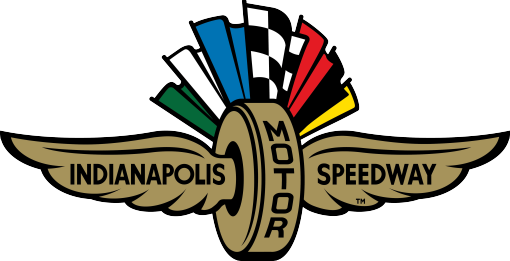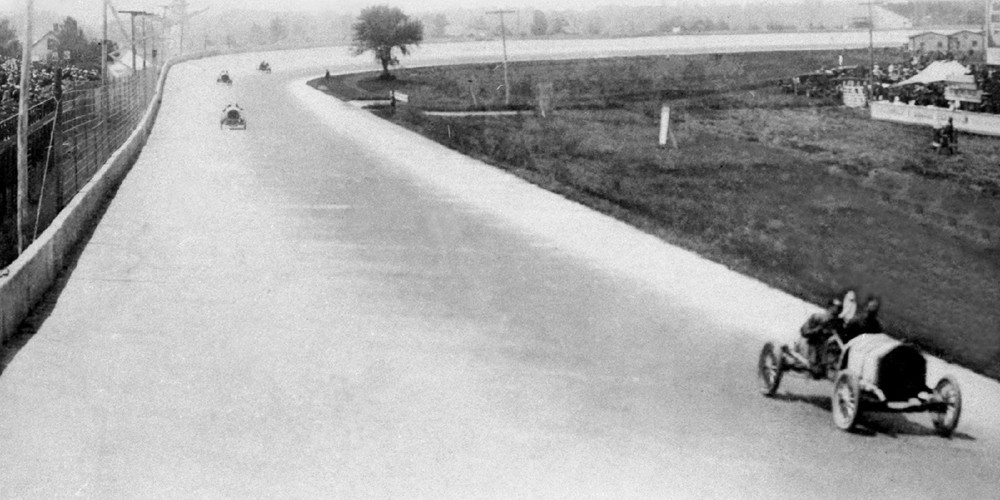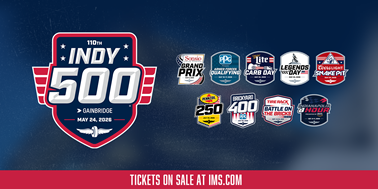1911
A massive crowd, estimated as high as 85,000, witnessed the inaugural running of the Indianapolis 500 on May 30, 1911. The race was won in a time of six hours and 42 minutes by a racing version of the locally built Marmon passenger car.
Ray Harroun, of the Marmon engineering department, not only drove it to victory, he also helped design it. In response to objections from other teams during practice that his single¬¬-seater had no provisions for the normally carried riding mechanic, Harroun installed (above the cowling) what is believed to have been the very first rearview mirror ever used on an automobile.
Further history was made at the start when track founder Carl Fisher led the 40-car field away with his Stoddard–Dayton passenger car for one unscored lap, then released them to the starter at about 40 mph. It is believed to have been the very first mass rolling start for any automobile race in the world, and quite possibly the first-ever use of a “pace” car at a major event.
1912
Ralph DePalma suffered the most confounded misfortune imaginable, for not only did he lead 196 of the 200 laps and fail to win, he didn’t even finish.
He was enjoying a lead of five and half laps—about 11 minutes—over second-place Joe Dawson when a connecting rod snapped and punched a hole in the crankcase of his huge chain-driven Mercedes. He struggled along for several laps until finally grinding to a halt in Turn 4 of his next-to-last lap.
He and his riding mechanic—Australian Rupert Jeffkins—then got out and pushed the heavy car for several hundred yards to the start/finish line, only to learn that the 22-year-old Dawson had already won and that they were still two and a half miles shy of the finish.
1913
Speedway management had sought from the very outset to make the 500-mile race a truly international affair, and for the third running of the classic, a few teams finally accepted the open invitation.
One of them won the race, the Peugeot of Frenchman Jules Goux taking the checkered flag an amazing 13 minutes and eight seconds ahead of an American Mercer to establish a record for margin of victory which has never been broken.
The third-place finisher, an Indianapolis-built Stutz driven by Charlie Merz, drew raves from the partisan crowd by completing the final lap with its engine on fire, its hardy riding mechanic, Harry Martin, stretched out across the hood and gamely trying to beat out the flames.
1914
The fourth running of the “500” was completely dominated by French entries, with cars from that country capturing the first four positions.
Pioneer aviator René Thomas led them home with his Delage at an average speed of 84.474 mph, breaking Joe Dawson’s 1912 record for elapsed time by 18 minutes. The highest-placed American was Barney Oldfield, whose locally built Stutz came home in fifth.
Another Frenchman, Georges Boillot, who would lose his life two years later when shot down in WWI aerial combat over Verdun, came very close to turning the track’s first-ever lap of 100 mph. The two-time winner of the French Grand Prix lapped his Peugeot at 99.86 mph.
1915
Italian-born Ralph DePalma, who had suffered such a bitter defeat after leading almost the entire distance in 1912, finally received his just reward. But it did not come without some anxious moments.
In 1912, a connecting rod had snapped and punched a hole in the crankcase of his 1908 Mercedes, pumping out all of the oil and causing him to grind to a halt within sight of the finish. Now at the wheel of one of the Mercedes from the 1914 French Grand Prix, he had almost exactly the same thing happen.
This time, however, he was able to nurse the car home to the finish, beating a French Peugeot driven by Dario Resta, an Italian-born English citizen, and a locally built Stutz, shared by Norwegian-born Gil Andersen and Indianapolis-raised Johnny Aitken. It was a truly international mix.
1916
Dario Resta, driving a Peugeot, won the 1916 Indianapolis Classic, which, partially due to conservation efforts toward the war in Europe, was scheduled for only 300 miles instead of 500.
Many of the Europeans who had participated in 1913 and 1914 were already serving their countries, while several of the Americans would soon be joining them.
The most notable of these was front-row starter and early race leader Eddie Rickenbacker, who at this time was still several months away from learning how to fly an aircraft. Within two years, he would be hailed as America’s leading World War I flying “ace.” Not only that, but in a little over nine years’ time, he would be heading up the management team at the Indianapolis Motor Speedway.
1919
The “500” was back after a two-year hiatus due to WWI, and it was a local victory of sorts, the winning driver being the very popular Crawfordsville, Indiana–born Howdy Wilcox.
His mount may well have been a French Peugeot, but it was owned by Carl Fisher and Jim Allison, two of the Speedway’s four founding members, and it had been prepared only about four blocks south of the track’s main entrance in the building that was gaining considerable notoriety as Allison Engineering’s Plant One.
In fact, nine of the 33 starting cars were French, the tri-color’s 1914 “500” winner René Thomas returning from World War I action to sit on the pole with a record lap of 104.78 mph in one of four Ballots entered, while 1913 winner Jules Goux placed third as Wilcox’s teammate in a Speedway-owned Peugeot.
Runner up Eddie Hearne’s Durant Special was actually one of the 1915 Stutz entries, while his riding mechanic, Harry Hartz, was one of 11 in this event who would later drive in the “500,” including Duesenberg’s Jimmy Murphy, who was destined to beat Hartz for the win in 1922.




